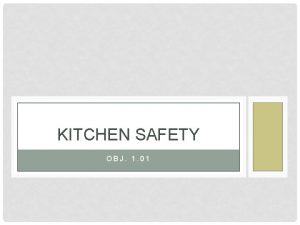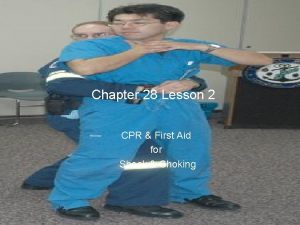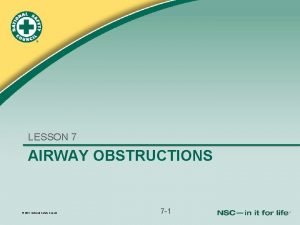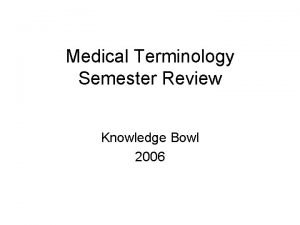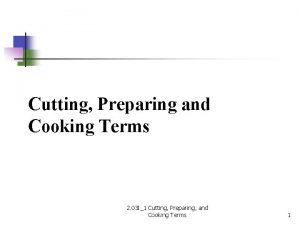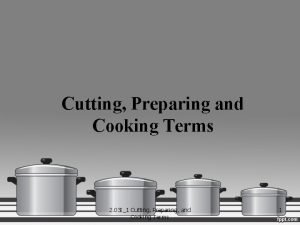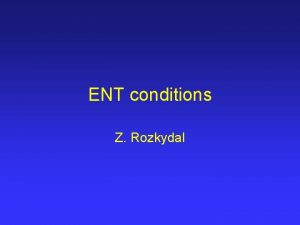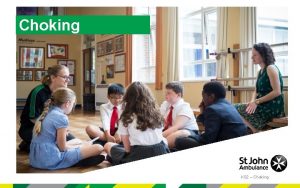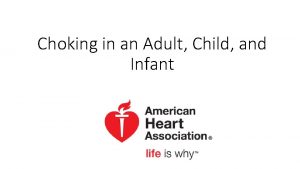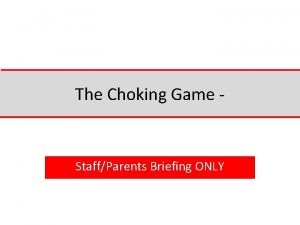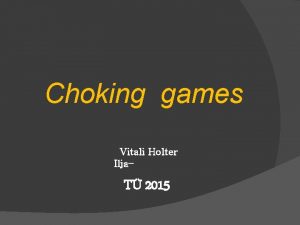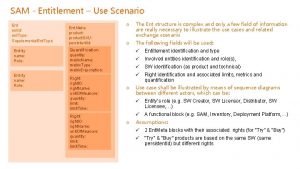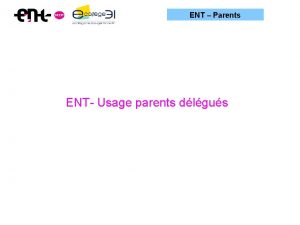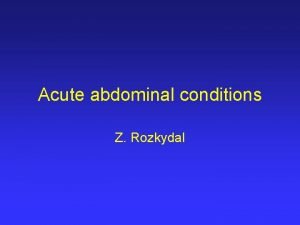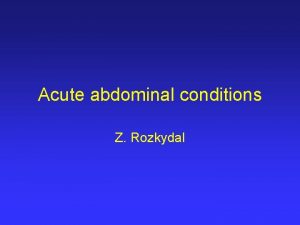ENT conditions Z Rozkydal Choking child Food small














- Slides: 14

ENT conditions Z. Rozkydal

Choking child Food, small objects in the mouth cause blockage in the airways Firs aid Encourage him to caugh Back blows – 5 Abdominal thrust – Heimlich maneuver - pull sharply inwards in the epigastrium five times Repeat these steps three times Coniotomy, coniopuncture Call 155 CPR Transport

Croup Epiglottitis acuta Attack of difficult breathing Inflammation in larynx and in the windpipe Infection in the throat, swollen throat Complete block of the airways- can be fatal Children 2 -7 years Haemophilus influenzae type b Signs Stridor, rasping noise Blue- grey skin, cyanosis Respiratory distress, movements of the chest wall Rapid progression in minutes !! High mortality

Croup Epiglottitis acuta First aid Coniopuncture Coniotomy Transport

Otitis media acuta Inflammation through Eustach tube into middle ear Signs Pain, fever, diminished hearing, nausea Pus discharchirg from the ear Management Paracenthesis, antibiotics Outer ear middle ear inner ear

Tonsilitis acuta Signs Throat pain, difficult swallowing, fever Management: antibiotics Complications: abscesus, rheumatoid fever in beta-haemolytic streptococcus infection Sinusitis acuta Signs Headache, pain in maxilla, fever Management: antibiotics, puncture, surgery

Epistaxis – nose bleeding Causes Spontaneus bleeding from locus Kisselbachi Haematological disorders, trombocytopenia, liver disorders, anemia, hypertension etc. First aid Bendig of the head forward, pressure on the locus Kisselbachi for 5 minutes, cold compresses Gelaspone

Haemoptysis Bleedig into the airways Causes Carcinoma of the larynx, TB, infections, coagulopathy, cardiovascular disorders, etc. Signs Caugh, haemoptysis, dyspnoe, presssure in the chest wall haemorhagic shock First aid Encourage the caugh, positioning, raising of the legs

Pneumothorax – air in the ribcage Penetrating chest wound Puncture of the rib to the chest wall Two-layered membrane – pleura- is perforated Physiological negative pressure- the lung is inflated In a case of penetrating wound- pressure in pleural cavity is positive- the lung colapses Severe damage to the organs, shock

Signs Difficult and painful breathing Cough- frothly red blood Cyanosis Veins in the neck are prominent Blood bubling out of the wound Sound of the air sucked into the chest

First aid To seal the wound and maintain breathing To minimise the shock Urgent removal to the hospital

1. Closed pneumothorax - early recovery, spontaneus healing 2. Open pneumothorax Three layers: 1. sterile dressing, 2. plastic bag, foil, kitchen film 3. secure with adhesive tape on three edges 3. Tension pneumothorax Breathing in- the air goes into the pleural cavity Breathing out- the wound is closed Increasing pressure as well to the opposite lung More pronouced signs- shock

Tension pneumothorax First aid Cover the wound Half sitting position or recovery position if he is unconscious Transport Puncture of the pleural cavity Drainage of the pleural cavity Ventilation

Haemothorax Blood collects in the pleural cavity Damage to the lungs of vessels Puts pressure on the lungs Signs: pain in the chest wall, dyspnoe shock First aid Sterile dressing of the wound Half sitting position Minimise the shock Management Puncture of the pleural cavity Drainage, surgery, blood trřansfusion
 Choking prevention
Choking prevention Kitchen safety choking
Kitchen safety choking Universal sign of choking
Universal sign of choking Choking hazard warning wording
Choking hazard warning wording Self heimlich
Self heimlich Skillsusa health knowledge bowl practice test
Skillsusa health knowledge bowl practice test Choking heimlich
Choking heimlich Unit 2 food food food
Unit 2 food food food Food chain sequence
Food chain sequence Left child right child tree representation
Left child right child tree representation A small child slides down the four frictionless slides
A small child slides down the four frictionless slides John pushes hector on a plastic toboggan
John pushes hector on a plastic toboggan Food buying guide for child nutrition programs
Food buying guide for child nutrition programs To cut food into small, uneven pieces.
To cut food into small, uneven pieces. To cut food into small uneven pieces
To cut food into small uneven pieces

